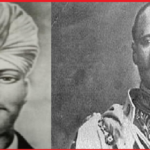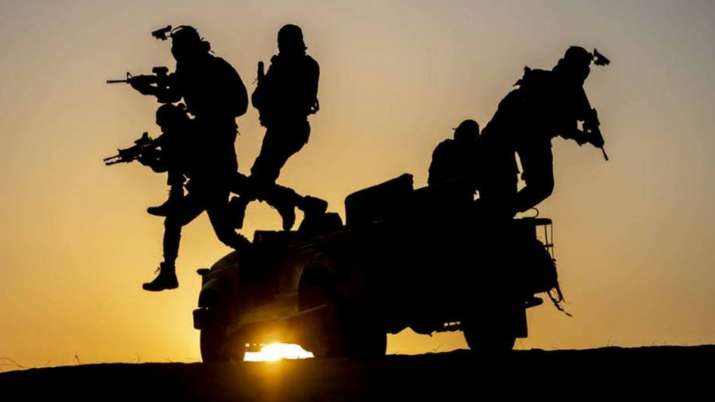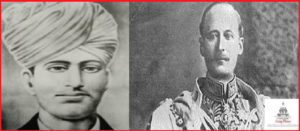These questions are being raised on Agneepath scheme
• What will the trend youth do after four years? This threatens the ‘militarization’ of society.
• Due to this scheme, the number of ‘newbie’ soldiers in the Indian Army will increase.
• This plan may disrupt the age-old regimental structure of the Armed Forces
• Its pilot project was implemented without bringing
• This will make about 40 thousand youth unemployed every year
Defense Minister Rajnath Singh on Tuesday announced a scheme named ‘Agneepath’ in the Indian Army under which there will be short-term appointments.
According to the plan, there will be recruitment of youth in the Indian Army for four years. After the job, they will be given a service fund package. His name will be Agniveer.
In the last few years, recruitments in the army were stalled, about which questions were being asked from the government. Among those who asked were many youths, for whom recruitment in the army is a big dream of life and an important source of job. In its announcement, the government also talked about giving packages to Agniveers in case of accident or death.
Rajnath Singh described the Agneepath plan as a modern, metamorphic step for the army.
The age of the new Agniveers will be between 17 and a half to 21 years and their salary will be between 30-40 thousand rupees per month. 25 percent of the recruited youth will get a chance to advance in the Indian Army while the rest will have to leave the job.
This year 46,000 Agniveers will be recruited.
Rajnath Singh said, “Young people will be given an opportunity to serve in the army. This scheme has been brought to strengthen the security of the country and to give military service opportunity to our youth.”
He said that this scheme will increase job opportunities and the skills and experience acquired during the service will also provide them jobs in various sectors.
Will this change the face of the Indian Army?
According to the government, the objective of the scheme is to strengthen the feeling of nationalism among the youth, to give a youthful face to the face of the Indian Army, to fulfill the aspiration of the youth to serve in the Indian Army. Critics of the plan are calling it a wrong move which is tampering with the traditional character of the Indian Army and which may affect the morale of the soldiers.
Retired Major General Sheonan Singh calls it a foolish move and says, “Saving money is good but it should not be done at the cost of defense forces.”
It is believed that the purpose of this government step is to reduce the burden of salary and pension on the Indian Army. Retired Major General Sheonan Singh says, “BJP wants to show that we have done something, that it is a decision-making party. It is like targeting the board. Who is meant by the results?”
The debate on how to upgrade the Indian Army with the changing times has been going on for a long time.
Is this the cure for unemployment?
In the Indian Army, 68 percent of the equipment is old, 24 percent of the equipment is today and eight percent of the state-of-the-art category. The reason is clear. In the year 2021-22, 54 percent of the defense budget was spent on salaries and pensions. 27 percent on capital expenditure, that is, in carrying out new works. The rest was spent on stores, maintenance of equipment, roads on the border, research, management.
According to a data, the expenditure on defense pension has increased by 12 percent in the last 10 years while the average increase in defense budget is 8.4 percent. The percentage of pension in the defense budget increased to 26 percent and then came down to 24.
The announcement of the government has come at a time when non-availability of jobs in the country is a big problem. According to Mahesh Vyas of CMIE, an organization that tracks the Indian economy, unemployment is a serious problem in India because the rate at which people need jobs, employment is not growing at that fast.
According to him, during the worst period of Kovid, where the unemployment rate in India had reached 25 percent, now this rate is seven percent. The unemployment rate among youth (15-29 years) in urban areas has been hovering above 20 percent for a long time. In such a situation, the announcement of the Prime Minister’s recruitment of 10 lakh people in ministries and departments in the next one and a half years is being seen in this context.
plan good or bad?
According to Retired Major General Sheonan Singh, joining the Indian Army for four years is a very short time and if it was a good idea then it should have been implemented in phases. There is also concern that in such a short time, how will a youth be able to connect himself with the military structure, nature.
He says, “Six months out of four years will be spent in training. Then that person will go to areas like infantry, signals, then he will have to take special training, which will take more time. Before using the equipment, you should have a good knowledge of it. should.”
Retired Major General Sheonan Singh is concerned that how much a person will be able to progress in service after spending so much time in training etc. He says, “That person will not become a pilot in the Air Force. He will become a groundsman or a mechanic. He will go to the workshop. What will he learn in four years? No one will let him take care of the plane. If you do not take care of the equipment in the infantry If you had to do it, you would not be able to work there.”
“If you go to war with an experienced soldier, will a person with four years of training be able to replace him on his death? These things don’t happen like this. It affects the efficiency of the security forces.”
Retired Major General Sheonan Singh says that India is threatened by insurgency or sedition rather than war, which requires an experienced and mature mind to deal with it.
On the other hand, according to retired Major General SB Asthana, this step of the government will reduce the profile of the Indian Army by six years, which will benefit it.
He says, “If you take people from ITI, they will be technically good. It is difficult to empower the old people technically. This generation is more capable in technical terms.” According to Retired Major General SB Asthana, this plan will give freedom to the army to keep the best 25 percent of the soldiers and let the rest go.
He says, “Right now our system is that if a jawan is admitted and he is felt that he is not well, then he cannot be fired unless a case of indiscipline or incompetence is brought against him.”
In the midst of this debate, the government announcement has come that after completing four years, Agniveers will be given priority in the Assam Rifle and Central Armed Police Forces.
The future of the people recruited in the scheme?
Critics of the Agneepath scheme say that a 21-year-old unemployed youth, trained in the army, can go on the wrong path and create trouble for the society by misusing his training. Retired Major General Sheonan Singh asks where will a 21 year old 10th or 12th pass unemployed youth go for employment?
He says, “If he goes for recruitment in the police, then he will be told that there are already BA pass youths, so he should stand at the back of the line. His promotion will be affected due to studies.”
He is of the opinion that the youth should be inducted in the army for 11 years so that they can serve for at least eight years and after eight years they should be allowed to leave with half the pension. Retired Major General SB Asthana believes that youth of 21 years of graduation and Agniveer will not be at a much different level while looking for a job as Agniveer’s skills will make him different from others.
According to retired Lieutenant General DS Hooda, considering the impact of this government scheme on the ground, its future can be decided, especially when the government and military leadership have worked on this plan for months. He says that it will take eight to ten years to understand the impact of this plan on the budget, and if the money is left, it can be spent on military modernization.
Retired Lt Gen DS Hooda says, “Under this scheme, 1.86 lakh soldiers will be recruited in the next four years. This will be 10 percent of the military strength. These four years will give us an opportunity to understand how this plan is going. Whether youth are getting attracted to it or not, are they joining the unit. What is their mood and what steps can the government take.”
compare to israel
Retired Major General SB Asthana said in the conversation that it is not that the model of Agneepath scheme of Modi government has not been tried anywhere else. He gave the example of Israel.
To know what is the situation in Israel, I contacted journalist Harendra Mishra in Jerusalem. According to Harendra Mishra, there is no problem of unemployment and it is not that youths misuse that training after compulsory military training. He tells that every youth there have to do compulsory training in 18 years and they do not get any salary for that training because it is seen with the sense of service to the country and not as a job. For women this training is of two years while for men it is of four years.
During this training only pocket money is given. Since everyone has to do this training, it does not happen that after training, someone has gone ahead in studies.
By BBC








More Stories
Who is the hunter and who is the prey in the drug game of death?
Is the sun about to set on the British Raj forever?
How are people winning crores of rupees by forming a dream app team?